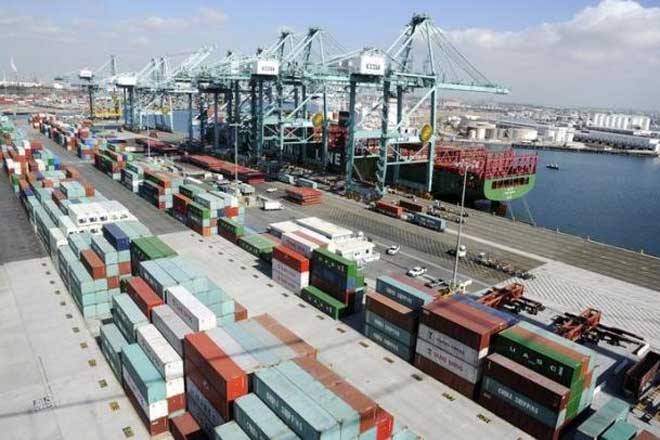In the context of rising interest rates and the US dollar, many port and shipping companies are confronting difficulties, but there are still beneficiaries.
According to the Vietnam Maritime Administration, in 2022, the total volume of cargo throughput via seaports was estimated at 733.18 million tonnes, up 4% compared to 2021. Exports reached 179.07 million tonnes, down 3% compared to 2021.
Imports reached 209.26 million tonnes, down 2%. Domestic goods reached 342.79 million tonnes, up 12%.
The volume of container cargo through the seaports in 2022 was estimated at 25.09 million 20-foot equivalent units, up 5% compared to 2021.
At the conference held last month by the Vietnam Maritime Administration to evaluate the work results in 2022 and deploy the key tasks in 2023, Deputy Minister of Transport Nguyen Xuan Sang assessed that the Vietnamese fleet had met 100% of the demand for goods transportation.
The volume of cargo transported on international routes of Vietnam’s fleet in 2022 increased by more than 10% compared to last year, reaching nearly 1.3 million tonnes of cargo.
“Revenue and profit of shipping companies both increased, possibly partly due to increased freight rates, but fleet quality also continued to improve, so did the fleet structure,” Sang said.
According to VNDirect’s estimates, in the first nine months of 2022, the revenue of listed shipping companies increased by 73.7% over the same period of the previous year, mainly thanks to the high sea freight rates contracted by the companies.
Gross profit margin also improved by 13 percentage points due to the increase in scale.
As a result, net profit of listed shipping companies increased by 70.8%, in which The Hai An Transport and Stevedoring JSC recorded the strongest net profit growth of 171.8% thanks to strong fleet expansion in 2022.
However, in the international market, after a period of rapid growth, sea freight rates suddenly dropped. This is the result of the weakening of global freight demand while the market expects an increase in supply in the near future.
According to Alphaliner, the number of new shipbuilding orders continues to increase, bringing current orders to 27.9% of total market capacity, the highest level since 2012.
The global fleet could grow by 4.4% and 8.2% year-on-year in 2022 and 2023 due to new orders being delivered, while global cargo throughput may increase only by 0.9% and 2.7% in 2022 and 2023 due to the global economic recession.
VNDirect forecasts that the oversupply will put great pressure on sea freight rates in the near future.
Business results of shipping lines see a certain lag with fluctuations in sea freight rates because charter contracts usually last from six to 12 months.
Therefore, the impact of the reduction in sea freight rates will begin to reflect on the business results of shipping companies in the 2023-2024 period.
But analysts still see a number of positive factors that could somewhat mitigate the negative impact of the price reduction. Among them, China’s reopening and the average Brent oil price seen to remain around US$90 (RM394) per barrel in 2023.
Source: Hellenic Shipping News





